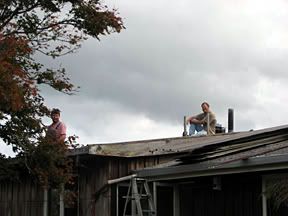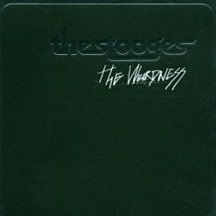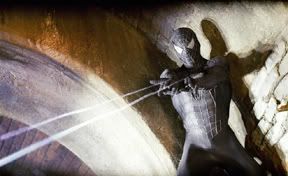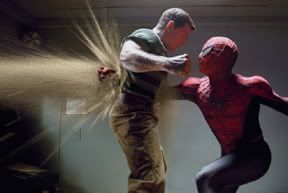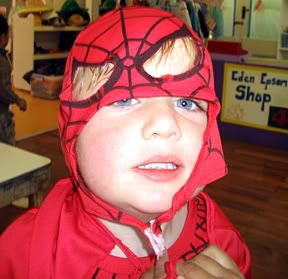Notes from Sydney, Part 1
 ...All right mates, we're back from our Australian holiday and I'm ready to write something about our trek down under (well, down-er under-er and a little to the left of New Zealand, I guess). Sydney is magnificent, and a fantastic place to spend nearly a week. I'm totally infatuated with Australia now and ready to hop on a dingo and blow a didgeridoo. But lest I gush too much, here's a look at the first couple days of our trek – and there's more photos up on our Flickr page with more to come, too!
...All right mates, we're back from our Australian holiday and I'm ready to write something about our trek down under (well, down-er under-er and a little to the left of New Zealand, I guess). Sydney is magnificent, and a fantastic place to spend nearly a week. I'm totally infatuated with Australia now and ready to hop on a dingo and blow a didgeridoo. But lest I gush too much, here's a look at the first couple days of our trek – and there's more photos up on our Flickr page with more to come, too!Some dimwit dude (ahem) booked our flight out of Auckland for 7 a.m. Wednesday; which of course meant we had to get up around 4 a.m. to get to the airport two hours before we took off; which meant that by the time we got to Sydney, with a 2-hour earlier time zone, we had been up since 2 a.m. that day. Urk. In any event, we were rather fried after the 3-hour flight, and somehow stumbled out of the airport and onto the subway (whee! I love subways!) into downtown Sydney, where we'd booked what turned out to be a fantastic, quiet Travelodge hotel tucked in the middle of the downtown business district.
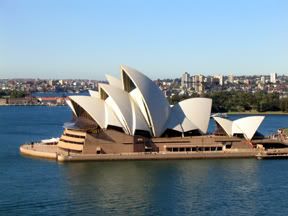 After recuperating from the flight for a little bit, the three of us toddled out to explore the town, walking down to the world-famous Sydney harbour and the Circular Quay, home of the Sydney Opera House, Sydney Harbour Bridge and more. The Opera House is one of the most famous sights in the world, and didn't disappoint on first viewing – it's an astoundingly alive creation by Dane Jørn Utzen. While smaller than I'd imagined (like most such things), the sharp angles, vivid shades of white and ivory and kind of geometric feng shui created by the building are fascinating. It's a building that looks different from every angle, that's assertive but not aggressive. It's like a broken set of china cups, yet it's somehow harmonious. After a stroll around the outside of the Opera House and the adjacent Rocks district (some of Sydney's oldest streets, where the first convict settlers lived), we were worn out and ready to crash after a very long day.
After recuperating from the flight for a little bit, the three of us toddled out to explore the town, walking down to the world-famous Sydney harbour and the Circular Quay, home of the Sydney Opera House, Sydney Harbour Bridge and more. The Opera House is one of the most famous sights in the world, and didn't disappoint on first viewing – it's an astoundingly alive creation by Dane Jørn Utzen. While smaller than I'd imagined (like most such things), the sharp angles, vivid shades of white and ivory and kind of geometric feng shui created by the building are fascinating. It's a building that looks different from every angle, that's assertive but not aggressive. It's like a broken set of china cups, yet it's somehow harmonious. After a stroll around the outside of the Opera House and the adjacent Rocks district (some of Sydney's oldest streets, where the first convict settlers lived), we were worn out and ready to crash after a very long day.  Day two was more Opera House goodness – First thing in the morning, I took an hourlong tour of the building, while Avril and Peter went to wander the Botanic Gardens. Getting inside the Opera House, it may not be quite as immediately gripping as the outside, but it's still worth seeing. Architect Utzen actually left the project in a huff before the interior was completed, so it's kind of a mish-mash of heavy-duty industrial design, some purely functional performance space, and occasionally gorgeous rooms like the wood-lined, gigantic Concert Hall (which unfortunately they don't let you take photos of, but you can see it here). It's all impressive, but save that Concert Hall it doesn't have the imposing shock of the exterior. Later that week it turned out I'd go back for a performance at the Sydney Opera House, more about which in another post.
Day two was more Opera House goodness – First thing in the morning, I took an hourlong tour of the building, while Avril and Peter went to wander the Botanic Gardens. Getting inside the Opera House, it may not be quite as immediately gripping as the outside, but it's still worth seeing. Architect Utzen actually left the project in a huff before the interior was completed, so it's kind of a mish-mash of heavy-duty industrial design, some purely functional performance space, and occasionally gorgeous rooms like the wood-lined, gigantic Concert Hall (which unfortunately they don't let you take photos of, but you can see it here). It's all impressive, but save that Concert Hall it doesn't have the imposing shock of the exterior. Later that week it turned out I'd go back for a performance at the Sydney Opera House, more about which in another post. 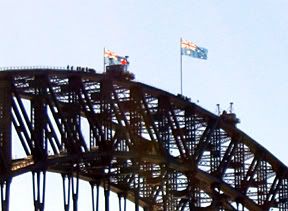 Then we had lunch in the Rocks district and walked up onto the Sydney Harbour Bridge, another of those iconic Aussie sights. I only walked about halfway out onto the bridge (which is much shorter than you might think), but it's a dazzling view. I also watched the bridge climbers moving like ants along the top arch - people climb up there on tour groups all day long, apparently. We'd see big groups up there of 20-30 people, all tethered to safety lines. I don't know - I had a pretty good view of the harbor anyway from the bridge just at street level, and imagine you'd have to be pretty confident in heights (and strong winds) to want to walk up to the top of it! (You can see them clustered next to the flags in the photo.)
Then we had lunch in the Rocks district and walked up onto the Sydney Harbour Bridge, another of those iconic Aussie sights. I only walked about halfway out onto the bridge (which is much shorter than you might think), but it's a dazzling view. I also watched the bridge climbers moving like ants along the top arch - people climb up there on tour groups all day long, apparently. We'd see big groups up there of 20-30 people, all tethered to safety lines. I don't know - I had a pretty good view of the harbor anyway from the bridge just at street level, and imagine you'd have to be pretty confident in heights (and strong winds) to want to walk up to the top of it! (You can see them clustered next to the flags in the photo.)That afternoon, we journeyed over to the Australia National Maritime Museum, showcasing all things naval. An excellent commemoration of Australia's considerable sea legacy, it included fine exhibits on the early settlers, plus lots of history on Australia's Navy, a submarine replica and more.
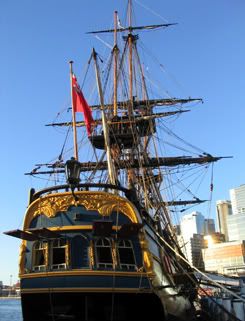 And finally it was on to one of the true highlights of our trip – stepping aboard legendary Captain James Cook's boat, the Endeavour. All right, not the real Endeavour, but an excellent, seaworthy replica boat built about ten years ago that is a stunning evocation of life nearly 300 years ago. The Maritime Museum includes several boats and a submarine moored outside to tour, but Endeavour was the only one we had time for, and one I've long wanted to see. Cook's voyages – the first European to see New Zealand, most of the Pacific, Bering Sea and more – are like the dictionary definition of "intrepid exploration," as the man mapped much of the unknown world in the late 1700s. Getting a chance to see the space he and his crew spent three years in was remarkable – talk about tight living! The replica was tricked out just as it would have been in 1788, even with botanist Joseph Banks' samples and notebooks laid out on his desk.
And finally it was on to one of the true highlights of our trip – stepping aboard legendary Captain James Cook's boat, the Endeavour. All right, not the real Endeavour, but an excellent, seaworthy replica boat built about ten years ago that is a stunning evocation of life nearly 300 years ago. The Maritime Museum includes several boats and a submarine moored outside to tour, but Endeavour was the only one we had time for, and one I've long wanted to see. Cook's voyages – the first European to see New Zealand, most of the Pacific, Bering Sea and more – are like the dictionary definition of "intrepid exploration," as the man mapped much of the unknown world in the late 1700s. Getting a chance to see the space he and his crew spent three years in was remarkable – talk about tight living! The replica was tricked out just as it would have been in 1788, even with botanist Joseph Banks' samples and notebooks laid out on his desk. 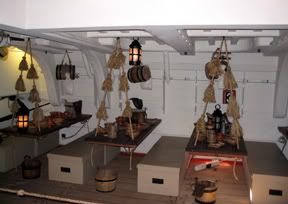 Below decks, the crew slept in hammocks tightly together, and the ceiling room is rarely over 5 feet tall (at one point dipping under 4 feet). Even the captain's quarters were barely the size of most people's closets today. But at least he had a door, a luxury most of the crew didn't. Above decks, you stand with countless masts and ropes and imagine what it would've been like, sailing into the unknown so long ago. A most excellent historical stop in this living time machine of a vessel. (I highly recommend Tony Horwitz's book "Blue Latitudes: Boldly Going Where Captain Cook Has Gone Before," which combines a history of Cook's travels with Horwitz's funny and informative tale of actually sailing on this modern Endeavour replica.)
Below decks, the crew slept in hammocks tightly together, and the ceiling room is rarely over 5 feet tall (at one point dipping under 4 feet). Even the captain's quarters were barely the size of most people's closets today. But at least he had a door, a luxury most of the crew didn't. Above decks, you stand with countless masts and ropes and imagine what it would've been like, sailing into the unknown so long ago. A most excellent historical stop in this living time machine of a vessel. (I highly recommend Tony Horwitz's book "Blue Latitudes: Boldly Going Where Captain Cook Has Gone Before," which combines a history of Cook's travels with Horwitz's funny and informative tale of actually sailing on this modern Endeavour replica.) Next: Up into the Blue Mountains!

